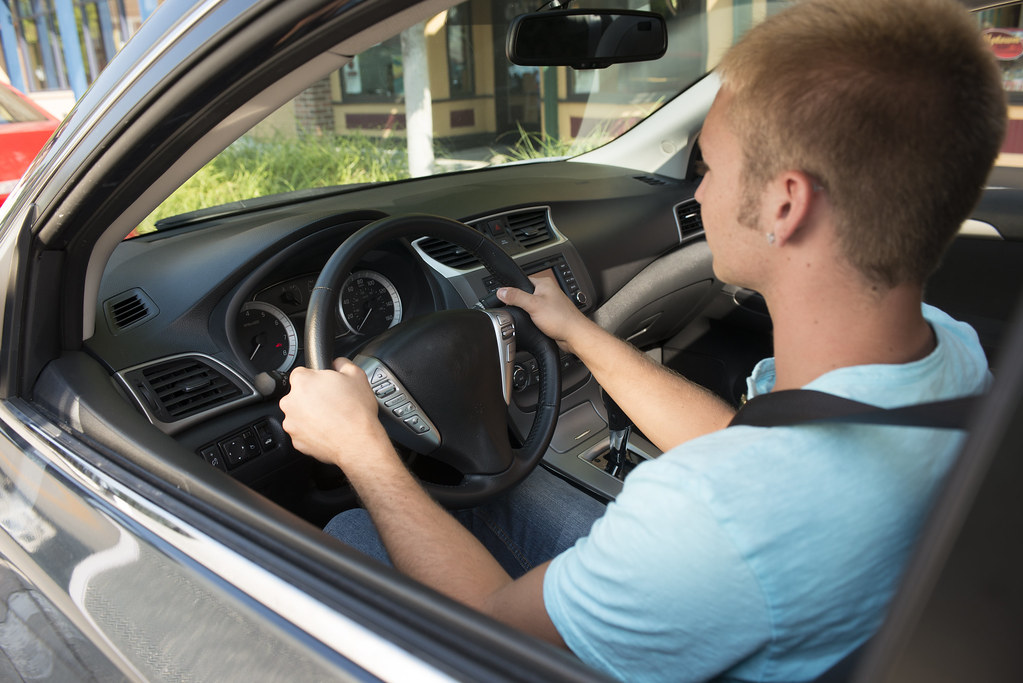According to the U.S. Centers for Disease Control and Prevention (CDC), the risk of motor vehicle crashes is higher among teens aged 16–19 than among any other age group. Per mile driven, this age group is nearly three times more likely to be in a fatal crash than drivers over 20 years old.
Driving Tips for Teenagers
While the open road may be calling, there is much to consider before jumping behind the wheel and driving off into the sunset as a teenager. Whether you are a teen who has recently been awarded the honor of a driver license or a petrified parent or guardian of a teen, these driving tips for teenagers could make a big difference in the risk involved with being a teenage driver.
Vehicle Maintenance and Awareness
You have probably been told to make sure to walk around the car and check under the hood every single time you are about to drive somewhere. That is a great suggestion but not realistic for the vast majority of adult drivers, let alone teenagers. Though you may only pop the hood every week or two, it is important to be cognizant of how your vehicle is functioning. Here are a few things to consider every time you get in the car:
- Did the vehicle start smoothly?
- Is there adequate fuel in the vehicle?
- Has the check engine light come on?
- Are there any abnormal sounds when the vehicle is idling or driving?
- Does the vehicle pull when you are driving straight?
- Is there any lag time when breaking or any squeaking noise when breaking?
- When was the last oil or transmission fluid change for the vehicle?
- Is the temperature gauge reading hot, cold, or in the middle?
If any of these things become a concern, it is worth taking the time to address them. Vehicle malfunction can not only leave you stranded, it can make you dangerous to yourself and other drivers.
Adjust the Headrest
This one is an important, yet underrated, driving tip for teenagers and adults alike. The headrest on your seat is not only to provide comfort. On the hypothetical chance that an accident does occur, a properly placed headrest can reduce the severity of whiplash. Whiplash is the most common vehicle crash injury with more than 3 million new cases each year. Though teenage bodies are often resilient, many whiplash cases result in disability.
Buckle Up to Go Any Distance
If your vehicle is not new enough to provide you with an annoying sound to remind you to put your seatbelt on, the responsibility is all yours. According to the CDC, in 2018, 22,697 people died in motor vehicle traffic crashes on US roadways, with over half of teens and adults 13–44 not wearing a seat belt. Even if you are just traveling a mile or two down the road, the risk still exists. Sometimes it can even be greater because as humans we can get comfortable with our surroundings close to home and lose focus on driving and what is around us.
Obey the Speed Limit
According to the National Highway Traffic Safety Administration, in 2016, speed was a factor in 32% of the fatal crashes that involved passenger vehicle teen drivers. Driving fast seems cool in the movies, but in real life, it can cost you your life or the life of someone else. Driving the speed limit not only reduces the velocity of impact but also allows you time to react to a hazardous situation.
Put the Phone Down
You knew this one was going to make the list. Texting and driving is just a really bad idea. There is absolutely no text you can send, email you can respond to, or call you can answer that is worth the risk of injury or death. On average, looking at your phone while driving removes your eyes from the road for five seconds.
This driving tip is simple and also very difficult. Do not look at your cell phone while driving. If you are expecting a call or text, find a place to park. Do not let your friends pressure you. The potential cost is far too great.
Reasonable Music Volume
Driving tips for teenagers are very similar to those for adults, but there are still some things that lean toward the younger demographic. Yes, when your favorite jam comes on, you are going to want to crank it up. But when you don’t hear the ambulance or police officer coming up behind you, that is going to be a problem. Keeping your eyes on the road is crucial, but being able to hear what is going on around you is also important. Vehicle horns are not only to express frustration (in fact they really shouldn’t be used for that purpose), but exist to warn drivers of potential dangers. Keep your music at a reasonable volume. While we are on that topic, it is also important to not mess with the stereo while the vehicle is in motion. Set your playlist before you put the car in drive.
Beware of Road Conditions
You can’t control mother nature. As someone who has minimal experience driving in fair conditions, it is highly recommended that you avoid driving in inclement weather. Depending on your location, some areas are not conditioned for snow or ice. The drive train on your vehicle and the condition of your tires can impact the ability of the vehicle to handle well. If the conditions of the road are in question, it is best to avoid travel and wait it out.
Driving Tips for New Drivers in an Accident
One factor often overlooked is other drivers. You can only control so much of your situation. These driving tips for new drivers are not meant to scare you, but to make you aware of the potential implications of your actions. The one factor you have the least control over is other people on the road. If you are in a vehicle accident, there are a few steps you can take to help you stay calm and handle the situation:
- Get yourself to safety—this may mean pulling the car off the road or getting out of the road and away from traffic;
- Do not leave the scene of the accident, even if it is only a minor fender bender;
- Call the police so that they can assess the situation and file a report;
- Refrain from admitting any sort of fault—what you say at the accident scene could be used against you later;
- Receive medical attention for any injuries—even minor bumps and bruises could have long-term implications; and
- Consult an experienced car injury attorney who can evaluate your situation and help you determine the best course of action.
These driving tips may seem like a lot for a teenage driver, but it is best to have a basic preemptive understanding of what could happen when driving and what things you have control over.

